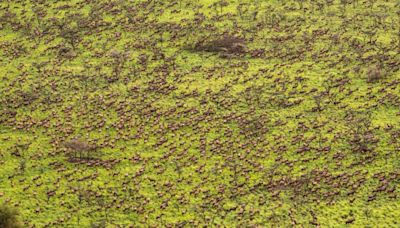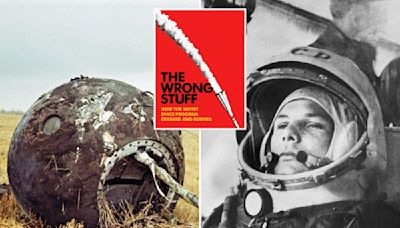Search results
19 hours ago · According to the Gaia hypothesis, life created Earth—or at least the Earth we know today. This theory, first formulated by chemist James Lovelock in the 1970s, was a hit with the media and the ...
3 days ago · The history of Earth is divided into four great eons, starting 4,540 mya with the formation of the planet. Each eon saw the most significant changes in Earth's composition, climate and life. Each eon is subsequently divided into eras, which in turn are divided into periods, which are further divided into epochs . Eon.
6 days ago · Earth, third planet from the Sun and the fifth largest planet in the solar system in terms of size and mass. Its single most outstanding feature is that its near-surface environments are the only places in the universe known to harbour life. It is designated by the symbol ♁.
- Earth is the third planet from the Sun and the fifth largest planet in the solar system in terms of size and mass. Its near-surface environments ar...
- Earth is located in the Orion-Cygnus Arm, one of the four spiral arms of the Milky Way, which lies about two-thirds of the way from the centre of t...
- Earth’s name in English, the international language of astronomy, derives from Old English and Germanic words for ground and earth, and it is the o...
- Earth and the other planets in the solar system formed about 4.6 billion years ago. The early Earth had no ozone layer and no free oxygen, lacked o...
- Viewed from another planet, Earth would appear bright and bluish in colour. In latitudinal belts, swirling white cloud patterns of midlatitude and...
6 days ago · Yuri Gagarin, Soviet cosmonaut who on April 12, 1961, became the first man to travel into space. His Vostok 1 spacecraft orbited Earth once in 1 hour 29 minutes at a maximum altitude of 187 miles, bringing Gagarin immediate worldwide fame.
- The Editors of Encyclopaedia Britannica
3 days ago · Seven planets were placed in orbit around it in an order of increasing distance from the Earth, as established by the Greek Stoics: the Moon, Mercury, Venus, the Sun, Mars, Jupiter, and Saturn. This list included two objects, the Sun and the Moon, which are now not generally considered planets.
Jun 13, 2024 · Earth is a terrestrial planet. It is small and rocky. Earth's atmosphere is the right thickness to keep the planet warm so living things like us can be there. It’s the only planet in our solar system we know of that supports life. It is mostly nitrogen, and it has plenty of oxygen for us to breathe.
1 day ago · At a distance of 163.1 AU (24.4 billion km; 15.2 billion mi) from Earth as of June 2024, it is the most distant human-made object from Earth. The probe made flybys of Jupiter, Saturn, and Saturn's largest moon, Titan.



